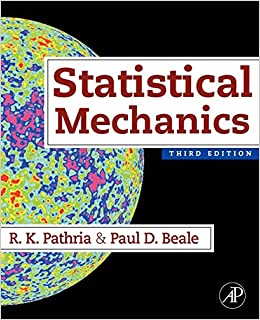(a) In this problem we are concerned with the integral [ I=int_{0}^{infty} frac{partial u}{d r} e^{-beta u}...
Question:
(a) In this problem we are concerned with the integral
\[
I=\int_{0}^{\infty} \frac{\partial u}{d r} e^{-\beta u} r^{3} d r
\]
Integrating by parts, we get
\[
I=-\left.\frac{1}{\beta}\left[e^{-\beta u}+c \right] r^{3} \right|_{0} ^{\infty}+\frac{1}{\beta} \int_{0}^{\infty}\left(e^{-\beta u}+c \right) 3 r^{2} d r
\]
An arbitrary constant \(c\) has been introduced here to secure "proper behavior" at \(r=\infty\). Since \(\exp (-\beta u) \rightarrow 1\) as \(r \rightarrow \infty\), we choose \(c=-1\). The integrated part then vanishes [assuming that \(u(r) \rightarrow 0\) faster than \(1 / r^{3}\) ], and we are left with the result
\[
I=\frac{3}{\beta} \int_{0}^{\infty}\left[e^{-\beta u}-1 \right] r^{2} d r
\]
This reduces eqn. (10.7.11) to the desired form.
(b) In the case of hard-sphere potential, the function \(f(r)=-1\) for \(r \leq \sigma\) and 0 for \(r>\sigma\). We then get
\[
\frac{P V}{N k T} \simeq 1+\frac{2 \pi n \sigma^{3}}{3} \quad\left(n=\frac{N}{V} \right)
\]
For \(n \sigma^{3} \ll 1\), we may write this result in the approximate form
\[
P V\left(1-\frac{2 \pi n \sigma^{3}}{3} \right)=N k T
\]
Comparison with Problem 1.4 shows that the parameter \(b\) of that problem is equal to \((2 \pi / 3) N \sigma^{3}\), which is indeed four times the actual space occupied by the particles.
Step by Step Answer:






